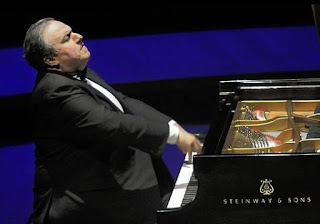Celebrating James Still's 20 years as playwright-in-residence, IRT brings back "Looking Over the President's Shoulder"

One hopes Indiana Repertory Theatre , in the 500th production of its history, can attract a young crowd to the 20th-century American history play James Still has put together from the memoir of Alonzo Fields, White House chief butler to four presidents. "Looking Over the President's Shoulder" also had David Alan Anderson in its sole role in 2008. In its opening-night reprise Friday on the Upper Stage, murmurs of recognition from the audience were frequent as Anderson's Fields plumbed his capacious memory for anecdotes of chief executives from Herbert Hoover through Dwight Eisenhower and the times they helped shape and that shaped them. David Alan Anderson as Alonzo Fields In a span of consequential years from 1931 to 1953, Fields also had the opportunity to store up impressions of Great Britain's king and queen and its most famous prime minister of recent history, Winston Churchill. And among celebrities ranging from Hollywood's Errol Flynn to Marie Dr












